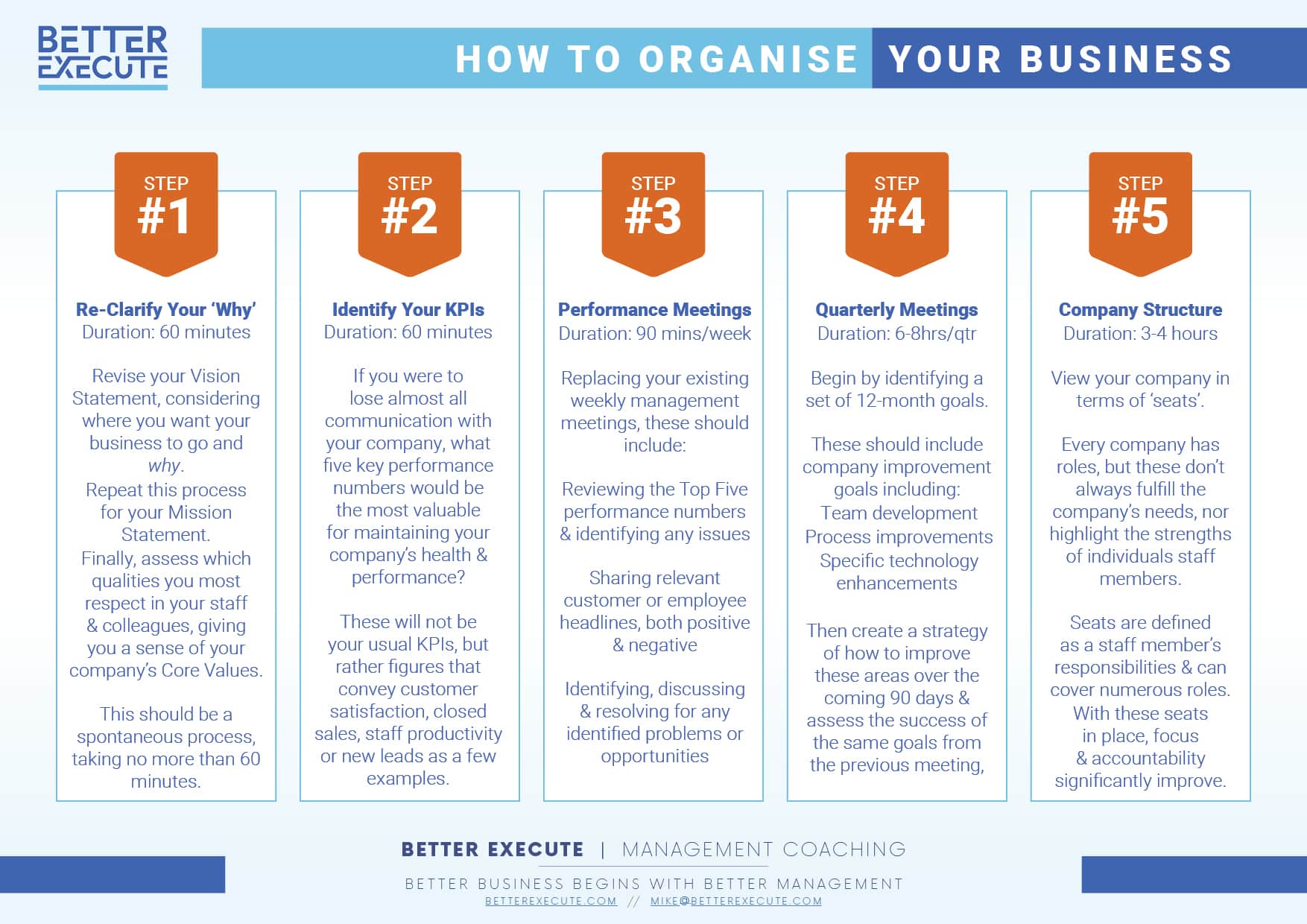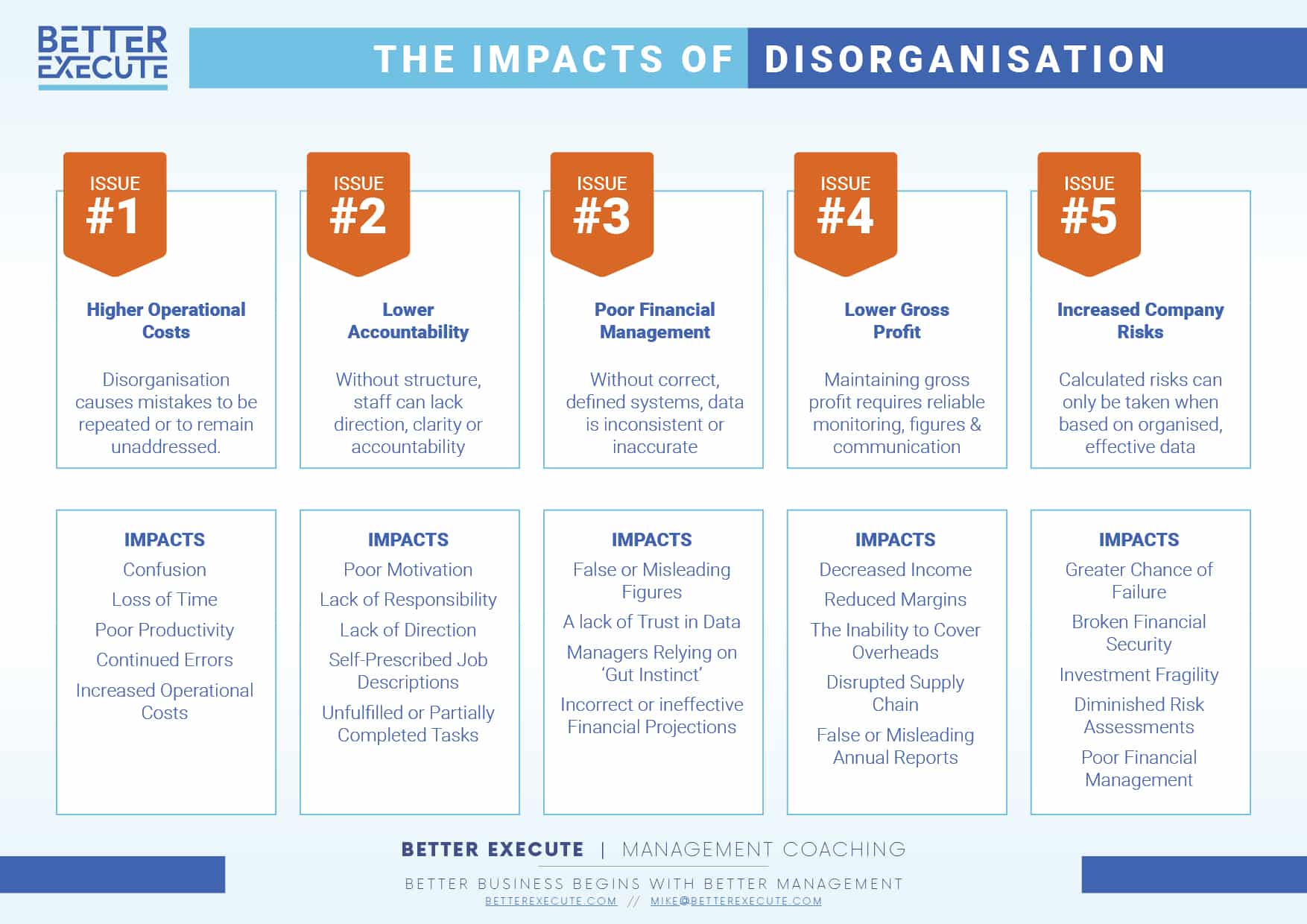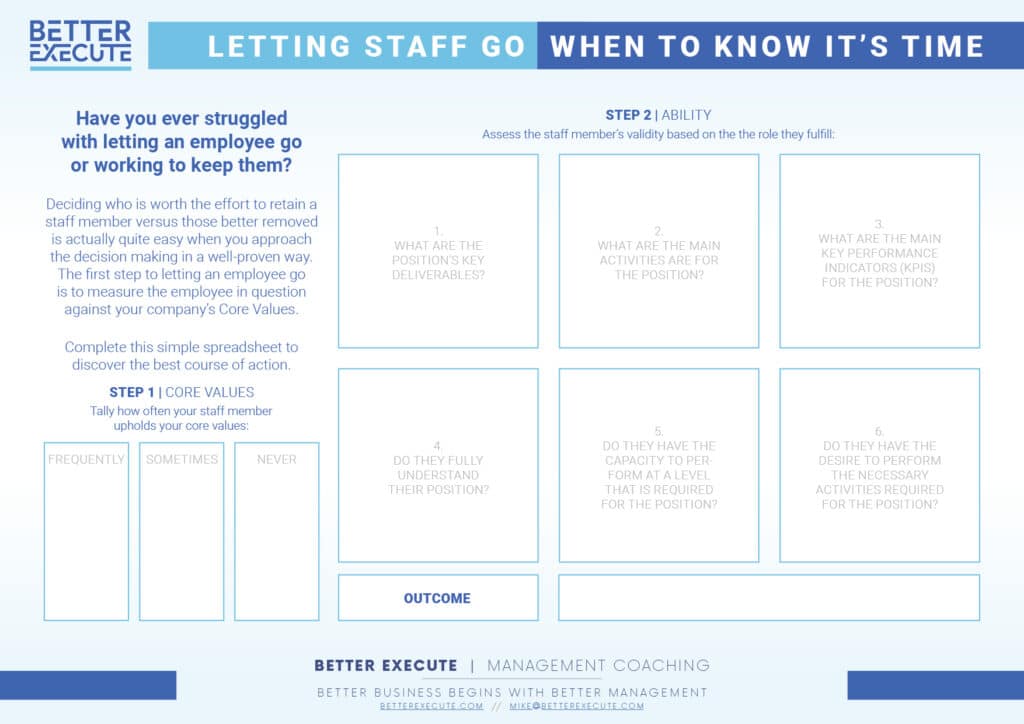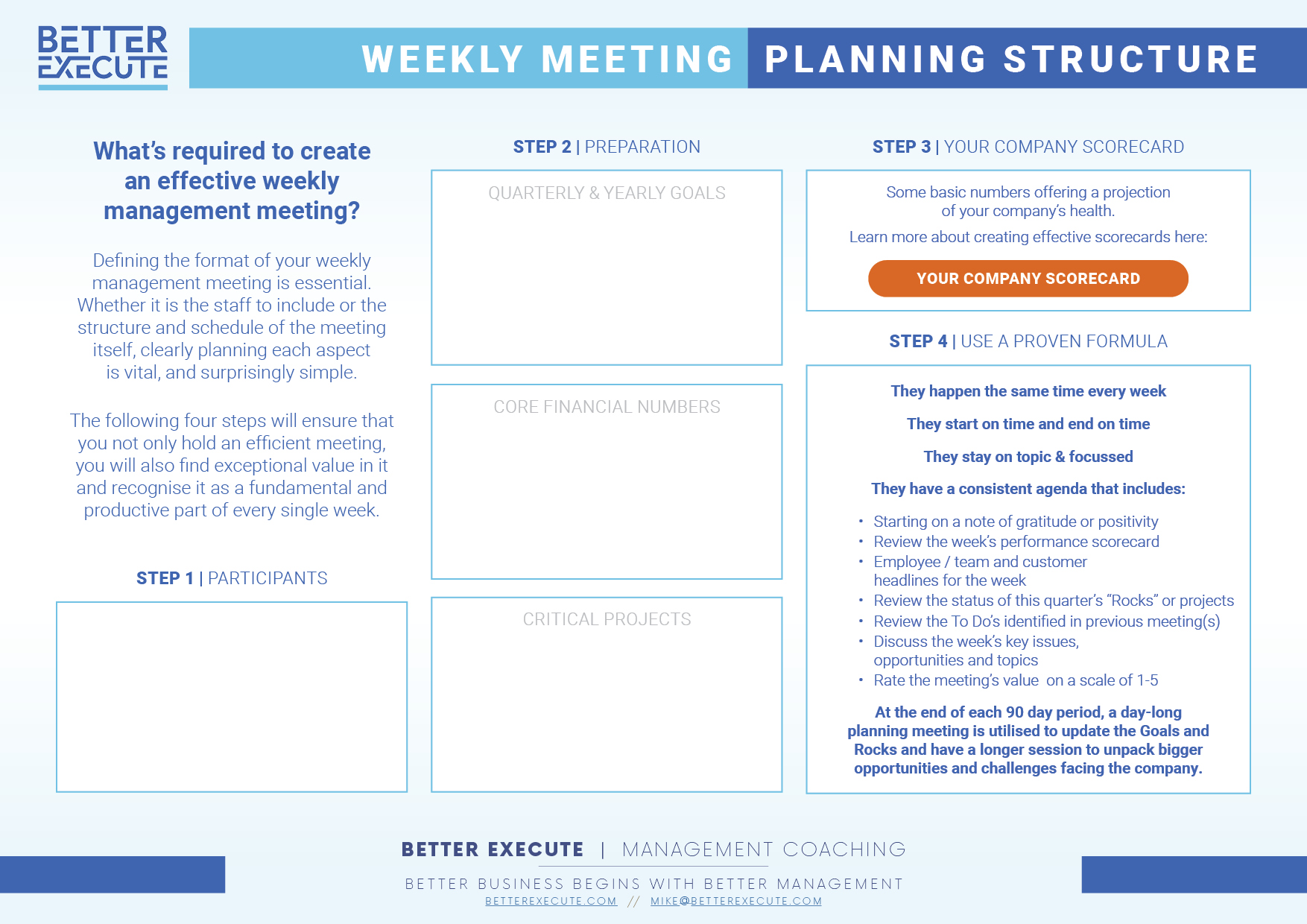Process Management
The BOS Implementation Strategy
Over the past seven weeks, we have discussed the key elements and five essential pillars of an effective Business Operating System (BOS). Now let’s talk about an easy way to incorporate the BOS framework into your business.
There are seven specific steps you should take to implement this Business Operating System:
Business Operating System: Step 1
The first step is to clarify who you are going to work with to implement your BOS framework over time. In the beginning, the focus will be on tightening up the planning and documentation. You want to keep this within a small group; often it can just be one other person to share your ideas with. When you feel prepared and ready to begin having weekly meetings, you will then want to include your direct reports. There are situations in larger companies where it can make sense to add a few more people who oversee key activities within your company but mainly they should be your direct reports.
Business Operating System: Step 2
Developing your company’s core values, vision, mission statement and USP is a key component of the BOS framework. These may continue to evolve over time, but initially, they need to be good enough to encapsulate what the company stands for. Another part of the company documentation that needs to be established is the longer-term strategic plan with a future view of between 3 and 10 years. How are you going to achieve your lofty goals? You want enough substance and motivation to give your plan some credibility.
Once this longer-term strategy feels credible you are ready for Step 3
Business Operating System: Step 3
The next step in the process is to clarify your next one-year financial goals and objectives. These need to be both compelling and strategic. Once again, these can be strengthened and adapted over time.
Business Operating System: Step 4
Creating or improving your company scorecard will allow you to identify and discuss what the critical activities and numbers within your business structure need to be and who is responsible for them. Once again, the key is not to achieve perfection in this, but rather to develop a starting point from which you can continually evolve.
Business Operating System: Step 5
With the first four steps completed, you are now ready to initiate your weekly management meetings. This first meeting should introduce the objectives and strategies for the meeting and with each subsequent meeting the agenda should become an ever-stronger guide to productive meetings that promote individual accountability.
Business Operating System: Step 6
The next logical step after your first 90 days is to conduct the first quarterly meeting. This will give you the chance to identify a clear set of key quarterly ‘rocks’ or objectives for each team member that will align with accomplishing the company’s one-year goals. It will also provide you a bit more motivation and urgency to improve upon the company declarations and longer-term goal definitions.
Business Operating System: Step 7
The final step is to continue refining each of the previous steps of this management process over time. Within a short period, this strategy will take shape and need less, if any ongoing development. From this firm foundation, it is now possible to begin enhancing the people and process management strategies and disciplines within your business.
Conclusion
By following my previous blogs and implementing them through this framework, your business will develop more transparency and efficiency. With the Business Operating System applied to your company at a management level, it is now also possible to develop similar operating frameworks at every level of your business.
We hope this process sounds both practical and achievable. Just like in business, a good idea is almost worthless without dedicated execution.
By effectively implementing these steps, you will develop:
- a strategy to generate better execution results, helping you to work smarter, not harder
- a stronger team of focussed, motivated and talented individuals working to the same goals
- a more valuable company by being able to demonstrate a proven framework for strong ongoing company performance.
Feel free to contact us with any questions along the way and, as always, enjoy the process!



















